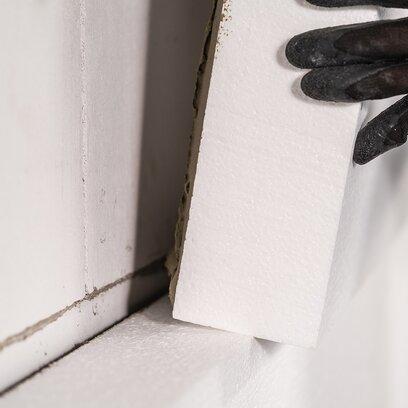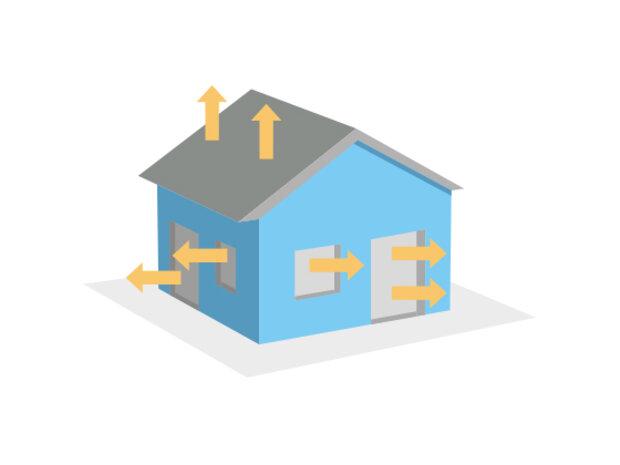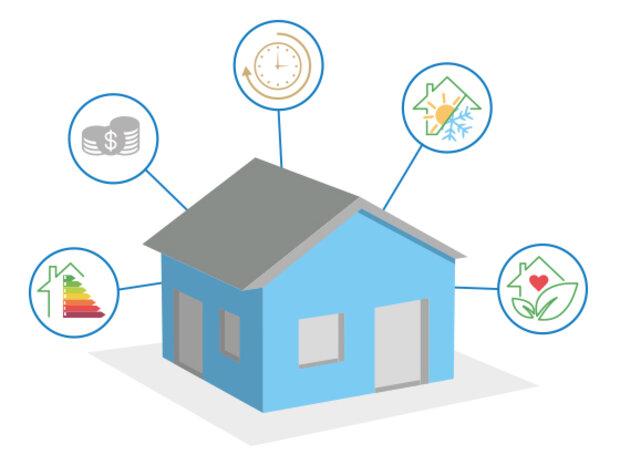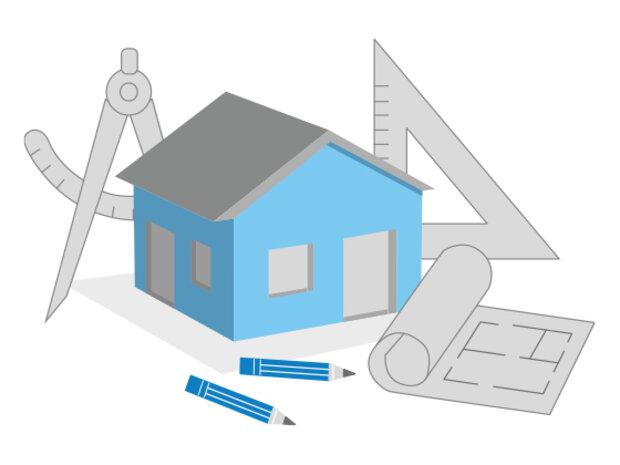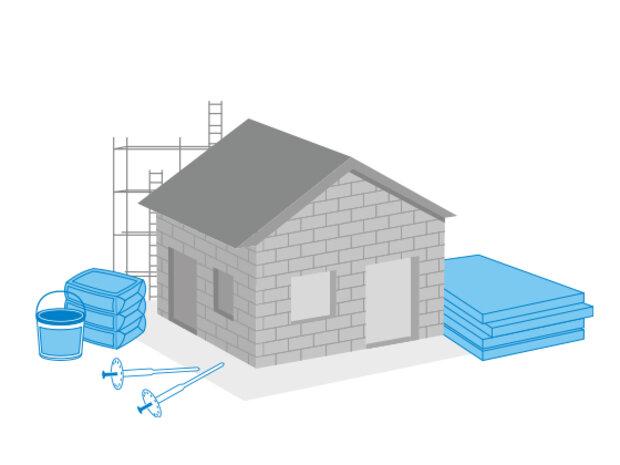Thermal Insulation Guide
The Cemix Thermal Insulation Guide helps with all of this, providing easily understandable information even for non-professionals.
Thermal insulation reduces heat loss and utility costs
According to the laws of thermodynamics, heat constantly tries to escape. Whenever possible, it seeps out through the walls, roof, doors, windows, floor, or ceiling.
No matter how good or efficient a heating system is, it’s useless if there are large gaps in the insulation. To maintain the desired temperature indoors, the lost heat must be continuously replaced. From the household budget’s perspective, this is a very painful process especially in the midst of a global energy crisis.
The chapter available at the link below focuses primarily on determining the extent of heat loss and the energy classification of buildings. It also provides important information about the energy requirements for newly built houses and the thermal insulation properties of different wall types.
Why is it worth insulating?
The use of modern thermal insulation systems offers numerous advantages. On one hand, they create a protective shield against the summer heat and winter cold; on the other hand, they reduce heating and cooling energy costs.
Thermal insulation applied to exterior facades significantly reduces temperature fluctuations in the walls. In winter, it prevents them from cooling down, and in summer, from overheating excessively — which greatly increases comfort levels. Most masonry structures alone, when left “unprotected,” cannot fulfill this role and do not meet the increasingly strict energy efficiency regulations for newly built houses.
The chapter available at the link below discusses these advantages in detail.
What kind of return can we expect from thermal insulation?
A well-designed and professionally installed thermal insulation system is clearly a good investment, whether for a new building or a renovation project. The high costs can be recovered in several ways, sometimes even within a few years.
On one hand, through the immediate increase in the property’s value; on the other hand, through the reduction of monthly utility bills and maintenance expenses. Not to mention the improvement in health and comfort - benefits that are truly priceless.
In the chapter available at the link below, we explain in detail how much a modern thermal insulation system can increase the value of a renovated property. We also provide the estimated price premium for each energy efficiency category.
How to get started with planning insulation?
Facade insulation systems are complex structures. Their design and installation are intricate tasks that require expertise and great attention to detail. To find the right option, beyond our own expectations, goals, and the problems to be solved, many factors must be considered. Some examples include:
-
the technical parameters and condition of the building,
-
the thermal and vapor properties of the masonry,
-
and the expected environmental impacts.
This chapter discusses the key questions we need to answer when considering a thermal insulation system. It does so by distinguishing between renovation and new construction cases. In addition, it covers the main parameters of these systems and the most common thermal insulation materials.
Why is it worth considering a thermal insulation system?
The overall performance of a system is determined by the performance of its weakest component. This statement is also fundamentally true for building insulation. When designing insulation, it is not enough to simply combine a few materials.
The individual components of a thermal insulation system must be selected so that they work together in perfect harmony. This way, we can achieve our goals more efficiently or eliminate existing problems. Different types of buildings and usage conditions require different system solutions and packages.
The chapter below focuses on the structure of Cemix Thermosystem facade and plinth insulation systems. It also covers the carefully selected premium materials and accessories that make up these systems, as well as the technical requirements for their use and installation.
Powerful visual arguments for thermal insulation
After the above text sections, a visually engaging video follows. In it, we summarize our main arguments in favor of using modern thermal insulation systems.
